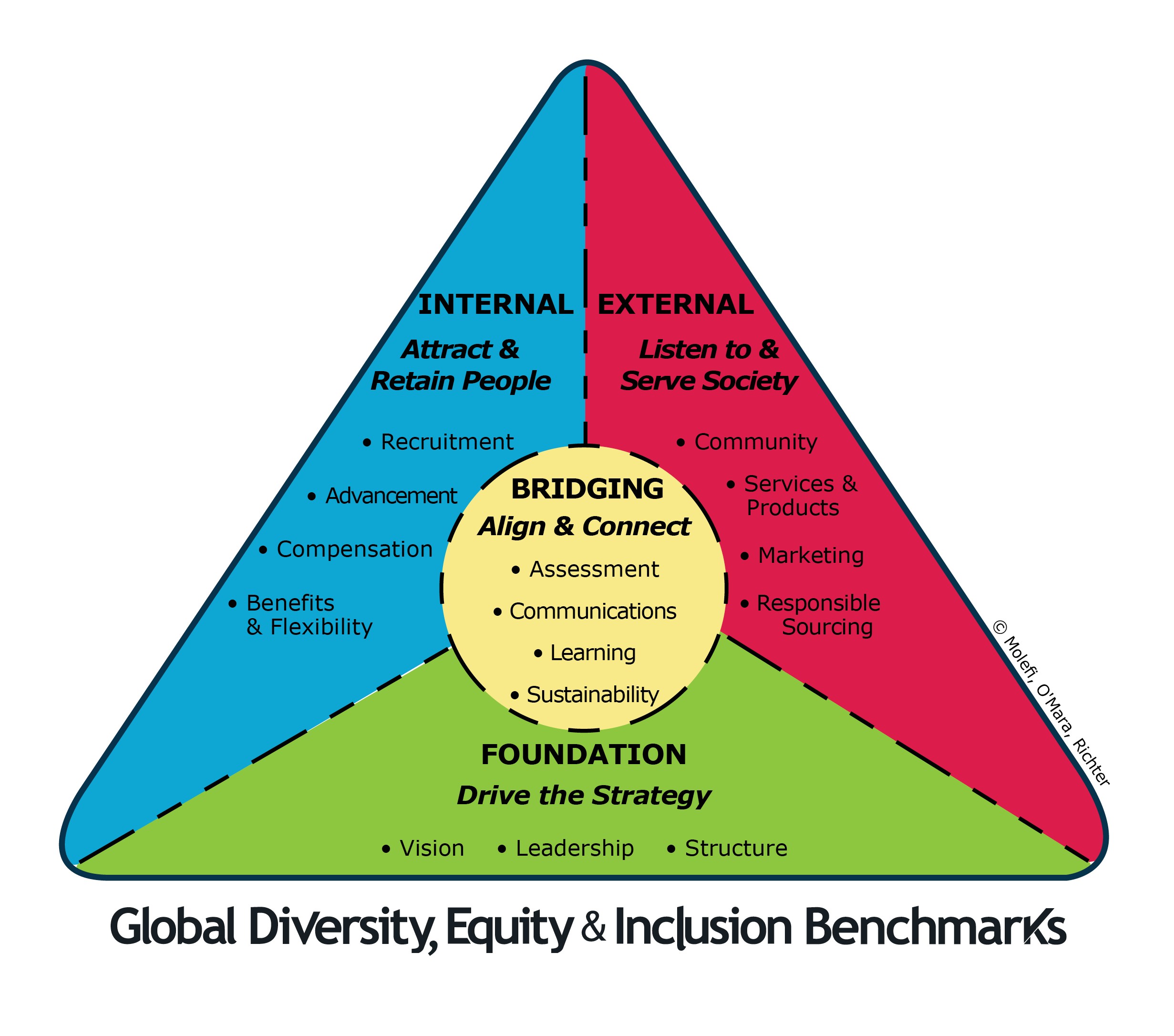A Blueprint for DEI in Houston
Published Apr 15, 2021 by A.J. Mistretta
As more companies nationwide recognize the importance of diversity, equity and inclusion in their organization, the focus becomes how best to assess where a company is in its DEI journey and how to track progress over time.
That was the topic for the Partnership’s Talent Resources Group event this week which looked at A Blueprint for DEI Progress. The virtual event introduced the Global Diversity Equity and Inclusion Benchmarks, a model developed by the Centre for Global Inclusion that helps companies and organizations across sectors with internal planning and operationalizing DEI.
Rolling out the GDEIB model to Houston area businesses is part of the Partnership’s One Houston Together commitment that aims to leverage the power of the business community to combat inequity. Initial focus areas for One Houston Together include accelerating the growth of underrepresented businesses and increasing racial equity in the corporate talent pipeline and executive leadership.
Partnership Senior Vice President of DEI LaTanya Flix told the virtual audience that the organization has positioned this work “not as one more thing we need to do but as the way we want to do business…We are at the beginning of this work, but we hope to leverage our resources, our convening power and the expertise within this region and outside the region to elevate the conversation and support you in your planning.” She added that the Partnership intends to elevate and share best practices, tools and resources for companies looking to implement strategies for change.
The GDEIB assessment tool will open to the Houston business community later this summer. The results will give individual companies a clear understanding of their own progress and will be aggregated to give a picture of the Houston region's collective progress in DEI.
The GDEIB model offers a framework for benchmarking organizations developed by a global panel of more than 100 experts.
One of those global panelists is Gina Cheverine, Managing Vice President at the Greater Cleveland Partnership, who discussed how her organization, and a wide array of businesses and nonprofits in the Cleveland metro area, have used the GDEIB tool.
“DEI has become such a critical element to an organization’s success,” Cheverine said. “There needs to be a set of standards and that’s what the benchmarks provide—a free resources to help groups develop and implement their DEI strategies and measure progress over time.”
The GDEIB assesses an organization’s position—from inactive to best practice—across 15 different categories in four groupings.
Foundation – drive strategy
1. Vision, strategy and business impact
2. Leadership and accountability
3. Dei structure and implementation
Internal – attract and retain people
4. Recruitment
5. Advancement and retention
6. Job design, classification, and compensation
7. Work-life integration, flexibility and benefits
Bridging - align and connect
8. Assessment, measurement and research
9. DEI communications
10. DEI learning and development
11. Connecting DEI and sustainability
External - listen to and serve society
12. Community, government relations and philanthropy
13. Services and product development
14. Marketing and customer service
15. Responsible sourcing
Myra Caldwell is Executive Vice President and Chief Diversity Officer with Cadence Bank, which has a significant presence in the Houston region. Caldwell said Cadence has been engaged in a comprehensive DEI program it calls Symphony since 2019 and recently adopted the GDEIB model to assess its progress.
“This answers a lot of our needs,” Caldwell said. “It allows us to set targets, understand the progress and directs our work for a better employee, customer and shareholder experience. The model really fits perfectly within our structure and keeps everyone aware and engaged.”
Learn more about One Houston Together and the Global DEI Benchmarks.
 The Houston Report
The Houston Report



















